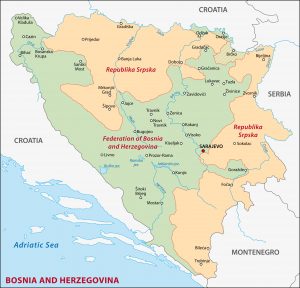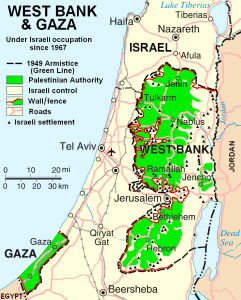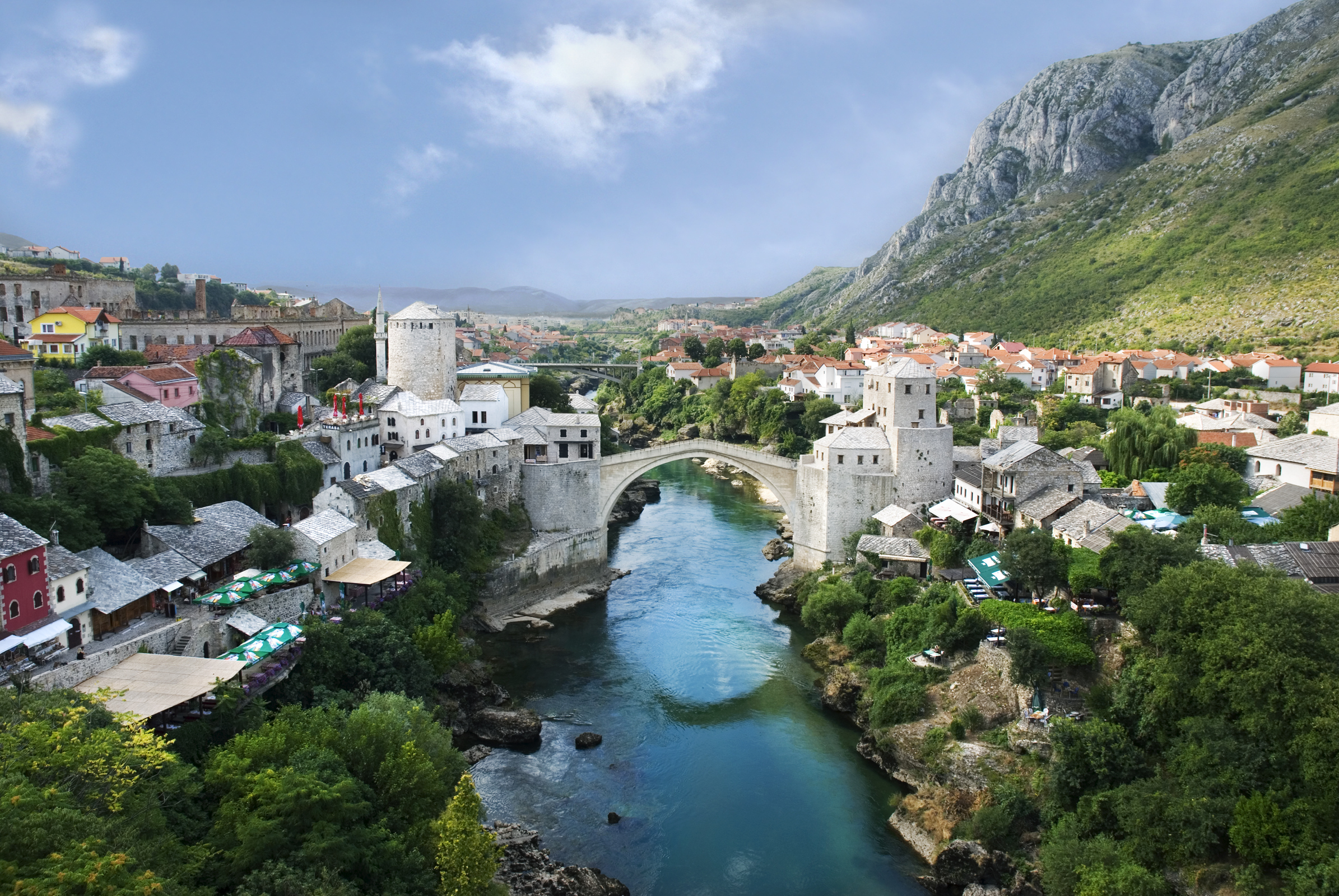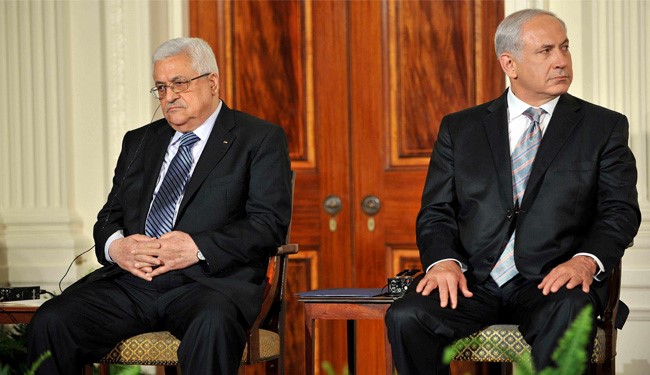In the modern age of autonomous states and comprehensive international law, territory doesn’t change hands quite like it used to. Thanks to the widely recognized principle of state sovereignty, distant rulers can no longer simply acquire another state’s territory with impunity.
This is not to say that territorial disputes do not continue to rage. The recent resurgence of high profile territorial disputes in the South China Sea and the Crimean Peninsula has brought the issue of territory back into the spotlight of international affairs. And indeed, it is not an isolated issue: there are 105 separate territories in dispute by a variety of states, with over 300,000 square miles of the Earth’s land area in question.
The embittered Israeli-Palestinian conflict, though much more nuanced than a mere dispute over land, is a prominent example of these kinds of conflicts. It highlights the overwhelmingly human side of territorial conflicts; the land in question often holds a powerful historical, religious, or otherwise closely held significance to each group involved.
Fortunately, even these complex and personal territorial conflicts are not without solutions. There exists in recent history precedent for a durable, peaceful resolution of ethno-religious conflict between multiple groups who claim legitimacy of rule in a region.
In 1991, as Yugoslavia was sent reeling by the collapse of the Soviet Union, many of its constituent ethnic groups grew keen on establishing their own states. The heterogeneous state of Bosnia and Herzegovina soon became entangled in a three-way vie for influence as the Orthodox Serbs and Catholic Croats established autonomous communities within the state, while the hapless Muslim Bosniaks became caught in the crossfire of the Bosnian land rush.
An independence referendum was held in Bosnia and Herzegovina in February 1992 that passed with flying colors, prompting Bosnian Serbs to take preventative action by occupying 70% of the country. The three-year conflict raged onward, culminating in a brutal siege of the Bosnian capital of Sarajevo, devastating ethnic cleansing campaigns — including the now iconic massacre at the village of Srebrenica — and even a breakdown of the Croat-Bosniak alliance into a war within a war that devastated southern Bosnia. Finally, in 1995, with the help of NATO’s first ever use of military force, political leaders of the three ethnic groups met in Dayton, Ohio to negotiate a treaty that would put an end to the Bosnian War.
What became of the 1995 Dayton Accords is the binational state of Bosnia and Herzegovina, as it is known today. The two nations are the Republika Srpska, populated mostly by Serbs, and the Federation of Bosnia and Herzegovina, populated mostly by Croats and Bosniaks. The intricately designed Bosnian government consists of a three-person presidency, comprised of one member from each of the three dominant ethnic groups. The presidency serves a four-year term, with the chairperson of the presidency rotating every eight months between the three members. Its legislature is bicameral, with a minimum quota of Serbs, Croats, and Bosniaks all guaranteed representation in parliament.


Political scientists Caroline Hartzell and Matthew Hoddie argue that the inclusion of tangible balance of power measures are a vital factor in determining the success of a peace agreement. In the form of a representative legislative and executive branch, the Dayton Accords laid out clearly defined efforts to promote the sharing of power among the three ethnic groups present in Bosnia and Herzegovina, which has contributed to the peace agreement’s duration. Similar emphasis on balance of power measures would be a necessary priority to match the success of the Dayton Accords in Israel and Palestine.
The merits of that landmark agreement, while not perfect, could provide a practical framework for productive agreements between Israel and Palestine, none of which currently exist. Past agreements between Palestinian and Israeli leaders, such as the Oslo Accords, which in the early 1990s served as the first step in what is now a stalemated peace process, have not shown any serious “hard” law efforts to curb the countless internally displaced persons (IDPs) in the region. Accusations of Oslo violations have flown consistently from leaders of both polities.
Much like in Bosnia, interwoven ethnic groups in Israel and Palestine make engineering a mass transfer of Jews and Muslims to their respective majority territories nearly impossible, as the generations of families who have made this region their home long predate the political border definitions of Israel and Palestine.
In fact, this highlights an important similarity between the Bosnian conflict and the Israeli-Palestinian conflict. Arabs and Israelis in the region encompassing Israel had been living together for centuries, long before a mixture of cavalier colonialism and militant extremism altered the dynamic of political power. The same can be said for Serbs, Croats, and Bosniaks in Bosnia: the transition away from the Socialist Federal Republic of Yugoslavia spawned a power-hungry nationalist faction that exploited the ethnic diversity of a previously peaceful state. That harmony can be achieved again with a new and improved political solution that offers a similar balance of power that the Dayton Accords installed in the single state of Bosnia.
Fortunately, everyday citizens — normal men and women who deal with the horrors of this divisive conflict daily — are starting to believe power sharing is possible, even preferable. Surveys in 2012 discovered the true sentiment toward an effective, joint solution “premised on equal rights.” The survey revealed that the falling popularity of a two-state solution was due not to a lack of desire, but a lack of feasibility; this is to say that although many prominent pundits in the region may prefer a two-state solution, they do not foresee it successfully occurring.
A recent Pew study shows public opinion of the notion that “a way can be found for Israel and an independent Palestinian state to coexist peacefully” has declined by 24 percent among Israeli Arabs since 2013. It is also a very contentious topic among Israeli Jews, who are split along clear ideological lines — although only the left-leaning Israeli Jews, just 8 percent of the Israeli population, are overwhelmingly holding out for a two-state solution. However, these Israeli hardliners, including Prime Minister Benjamin Netanyahu himself, may themselves be contributing to a one-state reality by openly forbidding Palestine and the rest of the international community from contributing to the germination of a stronger Palestinian state. In this case, it would be necessary for the international community and both Israeli and Palestinian moderates to cooperate to create a truly equitable one-state solution.
Combined with recent historical precedent in the Balkans, this stir in public opinion may suggest the time has come for renewed conversation over a one-state solution. If constructive dialogue between both citizens and leaders of Israel and Palestine can take place, a political solution will follow, be that a single binational state or some other, hopefully just as equitable and lastingly peaceful, configuration of political power.


